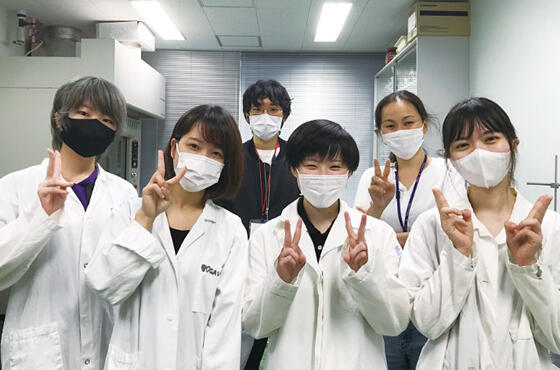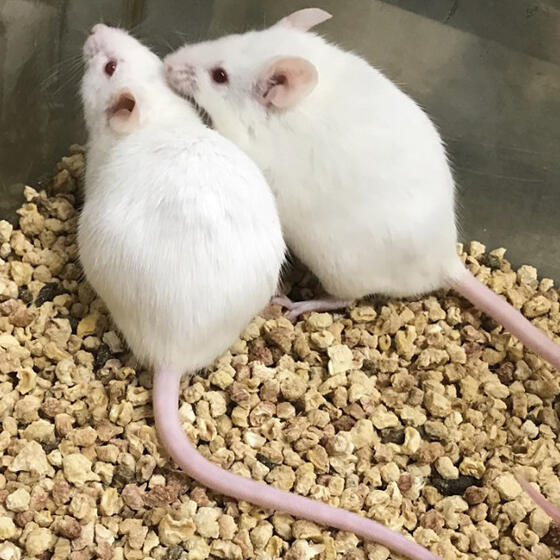
Associate Professor, Institute of Human Sciences, University of Tsukuba
Q1: What inspired you to become a researcher?
A1. I was attracted by a poster of a hamster and fell in love with animal psychology
My first encounter with animal psychology was when I saw a poster at university inviting people to apply for a research lab position with a cute picture of a hamster on it that read, "Are you interested in studying animal behavior?" I remember that I wanted to see the hamsters, and when I immediately went to visit the research lab, I was enthralled by the fascinating and profound field of research, with its unique professors, senior staff and fascinating studies that look at animal behavior and emotions.
My first research topic was 'strain differences in mice.' I wondered why the same type of mouse, kept in the same cage, behaved differently, and hypothesized that genetics might play a role. In the course of my research, I was given the opportunity to visit the laboratories of the National Institute of Genetics through my supervisor. This is where I came across 'wild‐derived mice.'

(Takahashi, back row, right)
Q2. What are you currently working on?
A2. I am analyzing the relationship between aggressive behavior and stress and functional foods that trigger relaxation
Some strains of wild‐derived mice, which are quick and very alert, show a great deal of 'aggressive behavior,' with males fighting each other. Some common laboratory mice are also more or less aggressive than others. I am investigating what genes and brain mechanisms are involved in the individual differences in this aggressive behavior. Furthermore, I am also analyzing the association with acquired environmental factors, such as stress. For example, intestinal bacteria are one environmental factor, and when bacteria from patients with depression was transplanted into mice, we saw cases of behavior similar to human depression in the mice.
Building on previous research, the A‐STEP Tryout investigated the relationship between aggression and intestinal bacteria in mice. It then became clear that the intestinal microbiota acted on aggression in mice, and we realized that it might be possible to identify the mechanisms of anger in humans.
In response to these results, the FOREST program aims to understand the network of the mouse brain, as well as how peripheral factors, such as intestinal bacteria, affect the brain to alter aggressive behavior. As the basic brain structure and the neurotransmitters used are common across species, our approach could help to us reveal the mechanisms of the human brain.
We also conduct joint research with the aim of developing functional foods that reduce aggression and induce relaxation. Initially, I thought that my research was far from industry‐academia collaboration, but with advice from the University of Tsukuba's University Research Administrator (URA), the Headquarters for International Industry‐University Collaboration and Matching Planner(s) of JST, I was able to build a good system for practical applications.
Q3. Do you have a message for students who want to become researchers?
A3. Do not be satisfied with search results alone.
Think for yourself, test it and enjoy it! The first step in my research, which has continued with the support of many people, was a poster that I saw by chance. If I had not knocked on the lab door that day, I might have led a completely different life than I do now.
In today's world of the Internet, it is easy to have the illusion that you can find anything you want to know by searching for it. However, I am not satisfied with the search results alone, and the fun part of research is to think about it, test it and find answers to questions and interesting things on your own. I think that this is the best profession to make a living at. I hope that those of you who will embark on the path of research will value your own curiosity and continue to have the will to explore on your own.
(TEXT: Manami Yokoi)


Profile
Aki Takahashi
Born in Nagano, Japan.
Obtained a PhD (Science) in Genetics from the School of Life Sciences at the Graduate University for Advanced Studies, SOKENDAI, 2007. Has been in her current position since 2019 following positions as an assistant professor in the Mouse Genomics Resource Laboratory at the National Institute of Genetics and as a visiting assistant professor at the Mount Sinai School of Medicine in the United States. Was an A‐STEP Tryout researcher from 2020‐2022 and has been a FOREST (Fusion Oriented Research for disruptive Science and Technology) researcher since 2022.




